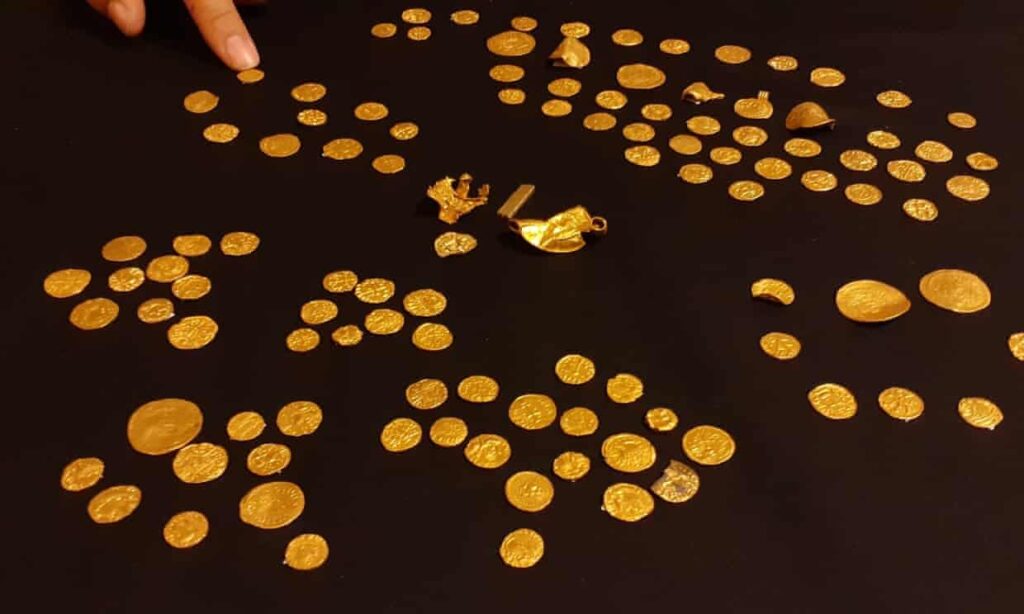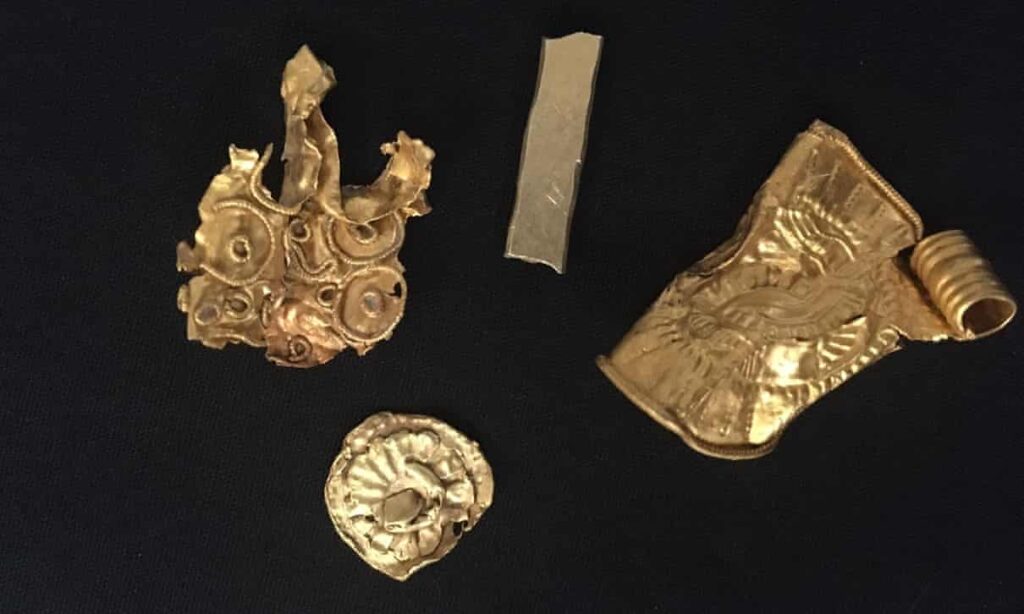Norfolk treasure newly declared as England’s biggest Anglo-Saxon coin hoard
131 gold coins unearthed sporadically over the past 30 years from a single field in west Norfolk have been declared the largest trove of such items from the Anglo-Saxon period discovered in England.

The coins, as well as four other gold objects dating around 1,400 years ago, were largely discovered by one metal detectorist who reported each find to local authorities.
According to a report from the Guardian, 10 coins were discovered by a local police officer, who was jailed for 16 months in 2017 for attempting to illegally sell them.
The Norfolk trove is mostly Frankish tremisses, a small gold coin used in Late Antiquity (about 284 C.E.–700 C.E.). Also found were nine solidi (a large coin from the Byzantine empire worth about three tremisses), a small gold bar, and a gold bracteate (a flat medal commonly worn as jewellery).

The Norfolk coroner is currently examining the gold objects to determine whether they constituted treasure as defined by the 1996 Treasure Act of Great Britain, which would make the coins the property of the crown. (In the U.K., coroners are charged with investigating treasure claims, as well as adjudging causes of death.)
The Treasure Act states that any two or more coins comprised of more than 10% precious metal and that are more than 300 years old are considered treasures. Finders are legally obligated to report suspected treasure to local authorities.
The crown will claim the find if an accredited museum wishes to acquire the objects and can pay a reward equivalent to its market value. Currently, the Norwich Castle Museum hopes to acquire the hoard with the support of the British Museum.
In a statement, Tim Pestell, senior curator of archaeology at Norwich Castle Museum and Art Gallery, called the Norfolk hoard an “internationally significant find,” adding that “study of the hoard and its findspot has the potential to unlock our understanding of early trade and exchange systems and the importance of west Norfolk to East Anglia’s ruling kings in the seventh century.”
Until now, the largest coin hoard dating from the Anglo-Saxon period consisted of 101 coins discovered at Crondall, Hampshire, in 1828.
The most famous of such finds were made at Sutton Hoo in 1939 by amateur archaeologist Basil Brown and popularized by the 2021 Netflix drama The Dig.
Brown and his team discovered beneath a mound an early medieval funerary monument filled with 37 gold coins, three blank coins and two small ingots, among silverware from Byzantium, military equipment, and other treasures.
The entire funeral chamber is housed at the British Museum in London.





